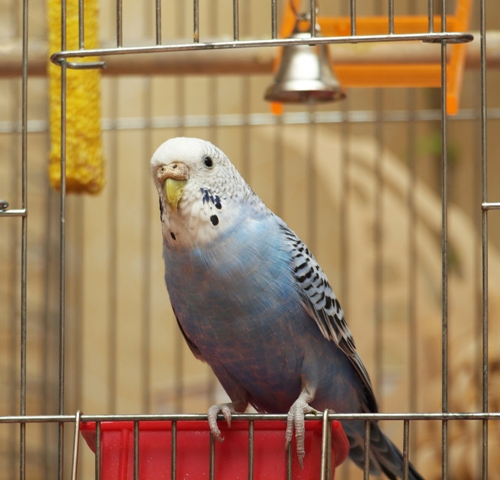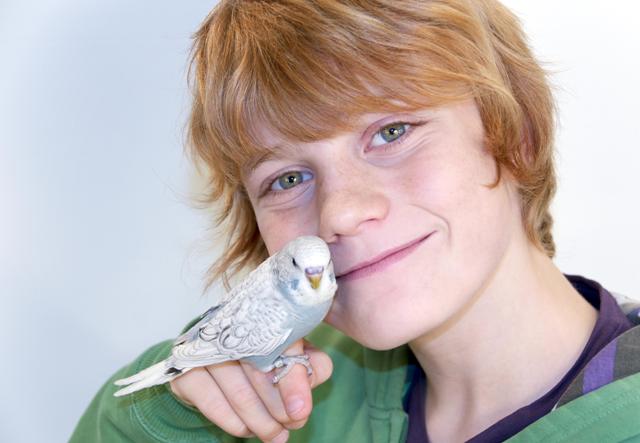Your cart is currently empty!

HARI Official Brand Site

Happy budgie body language includes an all over feather fluff, happy tail wag, sitting up straight & tall, chirping.
First, the easiest way to hand train your new pet is to start with a baby budgie. Baby budgies have black button eyes, with no pupil or iris easily distinguished. They sometimes have a black tip on their beak, and often have dark stripes on their head feathers. The cere (the fleshy bit right on the top of their beak) will be soft and smooth. Budgies are ready to leave their parents at approximately 7 – 8 weeks old. Any budgie under 16 weeks of age is a baby and will be a good candidate for finger training and teaching to talk. Ask that his flight feathers be trimmed so he can’t fly off and hurt himself while you are getting to know each other.
Many people request a male budgie – incorrectly thinking that only male budgies can learn to speak. Females can talk too! Mature males and females have different coloured ceres, males have bright blue ceres, females can have pink or beige or even very pale blue ceres. You cannot accurately tell the gender of a budgie by looking at its cere until it is approximately 20 to 24 weeks old. A bird that age may be much harder to hand train and it will take longer for a bird that age to bond with its new family.

Baby parakeets need to feel comfortable in their surroundings. Let it settle in for a day or two. You can sit quietly by its cage and talk to it, offer it bits of spray millet, and just observe its behaviour. Your budgie should be eating, drinking and exploring its cage and investigating his toys before you start to work with it.
There are many ways to do this. One that works for many people is as follows:
Finger or Perch Training
You now have two choices – you can begin finger training your budgie right away, or you can use a perch to start your training. Budgies may nip at your fingers out of fear, if you are at all nervous about being bitten use a small wooden perch to train him.
You are now ready to begin the “step up” training.

You should repeat the training sessions two or three times per day. The goal is to reach the point where you can open the cage, put your finger in and ask your budgie to step up onto your finger. He should not hesitate to do so, because “out of the cage time” will be play and cuddle time. Most young budgies only take a week or so to finger train. Do not just leave the cage door open for him to come and go as he pleases! A budgie that can decide for himself when he will come in and out is harder to train, and if he wanders on the floor looking for you he may get stepped on or lost.
Once he is gladly stepping onto your finger, you can continue training your budgie to teach him new tricks! Parakeets will gladly lay in your hand for chin rubs (play “dead bird”), explore your pockets (be a “pocket parrot”), and ride on your shoulder (just like a “pirate parrot”) Remember, birds need clean, safe environments to feel healthy and well. Wash and change water bowls twice daily, replace and top up food every day, change cage papers every day, offer your bird a bath/shower several times each week. An unwell bird makes a poor student!
The closer the bond with you, the more motivated your bird will be to want to learn the language of his new flock leader (that’s you!). Baby birds are like all babies, they need lots of time to sleep and eat. Keep your training periods short, upbeat and fun for you both.
By: Lisa Mitchell

Achieve this is by providing them with quality toys that are specifically designed for functional play.